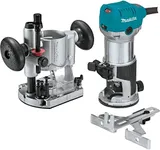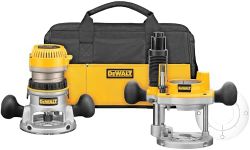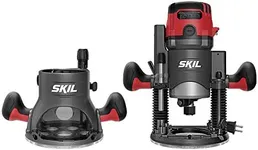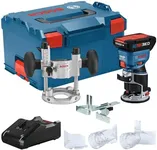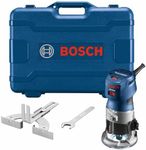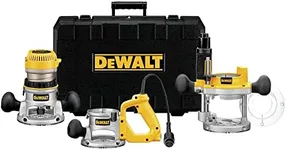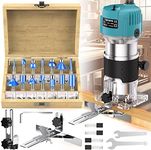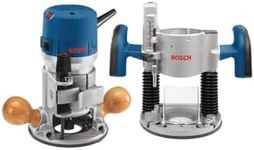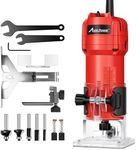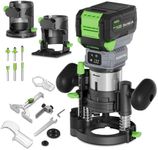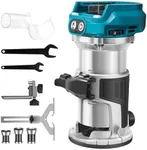Buying Guide for the Best Plunge Base Palm Routers
Choosing the right plunge-base palm router can significantly impact the quality and efficiency of your woodworking projects. These versatile tools are essential for tasks such as edge profiling, cutting grooves, and creating intricate designs. To make an informed decision, it's important to understand the key specifications and how they align with your specific needs. Here are the main specs to consider when selecting a plunge-base palm router.Power (Horsepower or Watts)Power is a crucial spec for plunge-base palm routers as it determines the tool's ability to handle different types of wood and the complexity of tasks. Routers typically range from 1 to 2.5 horsepower or 600 to 1500 watts. For light tasks like edge profiling and small grooves, a lower power router (around 1 HP or 600-800 watts) is sufficient. For more demanding tasks such as deep cuts or working with hardwoods, a higher power router (1.5 HP or more, 1000-1500 watts) is recommended. Choose a power level based on the type of projects you plan to undertake.
Speed (RPM)The speed of a router, measured in revolutions per minute (RPM), affects the quality of the cut and the types of materials you can work with. Routers typically offer variable speeds ranging from 8,000 to 30,000 RPM. Lower speeds (8,000-15,000 RPM) are suitable for larger bits and harder materials, while higher speeds (20,000-30,000 RPM) are ideal for smaller bits and softer materials. A router with variable speed control allows you to adjust the speed to match the specific task and material, providing greater versatility and precision.
Collet SizeThe collet size determines the diameter of the router bits you can use. Common sizes are 1/4 inch and 1/2 inch. A 1/4 inch collet is suitable for lighter, more detailed work and smaller bits, while a 1/2 inch collet can handle larger bits and more demanding tasks. If you plan to do a variety of projects, a router that accommodates both sizes offers greater flexibility. Consider the types of bits you already own or plan to purchase when choosing the collet size.
Plunge DepthPlunge depth refers to how deep the router can cut into the material. This is important for tasks like creating deep grooves or mortises. Routers typically offer plunge depths ranging from 1 to 3 inches. For general woodworking, a plunge depth of 1.5 to 2 inches is usually sufficient. If you need to make deeper cuts, look for a router with a greater plunge depth. Consider the depth requirements of your projects when selecting this spec.
Base TypeThe base type of a router affects its stability and ease of use. Plunge bases allow for precise depth adjustments and are ideal for tasks that require starting cuts in the middle of the material. Fixed bases provide stability for edge work and are easier to control for continuous cuts. Some routers come with interchangeable bases, offering both plunge and fixed options. Choose a base type based on the nature of your projects and your comfort level with the tool.
ErgonomicsErgonomics refers to how comfortable and easy the router is to handle. Features like soft-grip handles, balanced weight, and intuitive controls can make a significant difference in user comfort, especially during extended use. Consider the design and feel of the router, and if possible, try handling it before purchasing. A well-designed ergonomic router can reduce fatigue and improve precision in your work.
Dust CollectionDust collection is an important feature for maintaining a clean workspace and protecting your health. Routers with built-in dust collection systems or attachments for external vacuums can help manage debris effectively. Look for routers with efficient dust collection capabilities, especially if you work in a confined space or have respiratory concerns. A good dust collection system can also improve visibility and accuracy during cutting.

